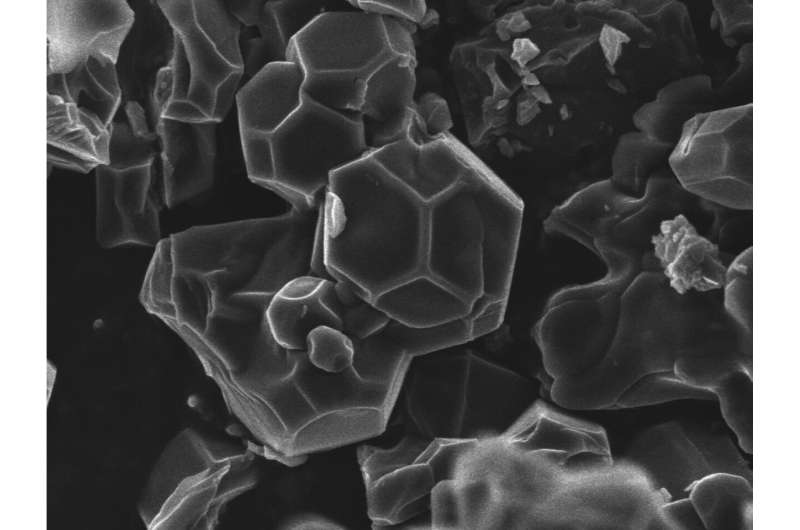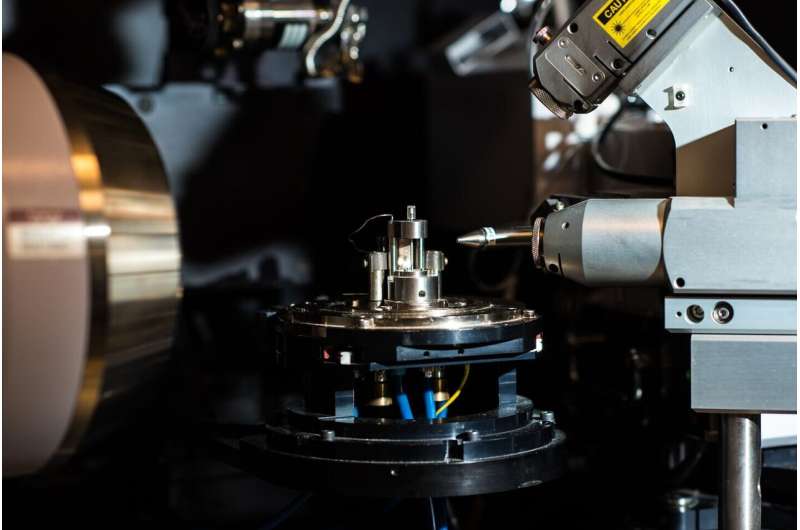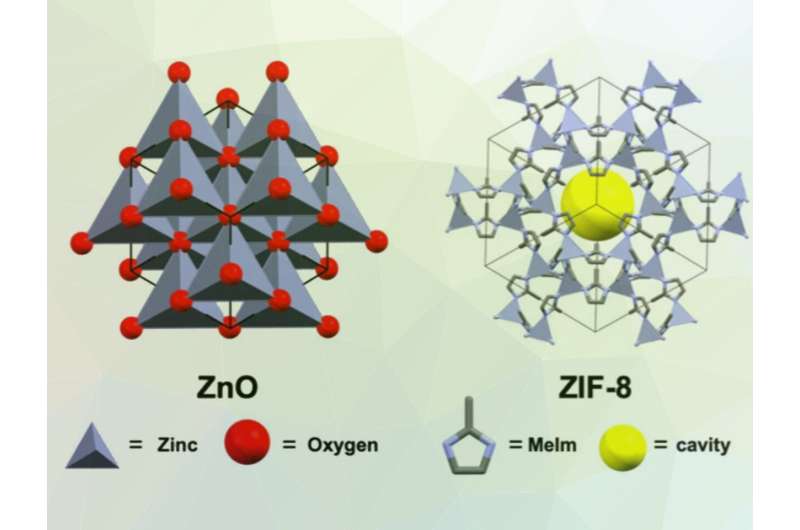Researchers find potential in eco-friendly synthesizer

Long before dimethylformamide (DMF) failed the squishy toy test, chemists raised concerns about its use as a solvent in the construction of metal-organic frameworks (MOFs).
The Ministry of Environment and Food of Denmark declared in June 2018 that DMF was among three toxic chemicals found in toys. Shortly after that, the toys were pulled from the Danish store shelves.
When it came to MOFs (porous nanomaterials with a wide range of applications) chemists have sought environmentally aware methods for MOF synthesis, following the adage of "benign by design." DMF is used as a solvent in MOF preparation reactions and has fallen short of that standard.
"There's a lot of waste generated in those solvents, and disposal can be a real problem," said Michael A. Sinnwell, a PNNL postdoc.
Sinnwell, PNNL materials scientist Praveen Thallapally, and colleagues investigated a greener way to synthesize MOFs.
"People who want to make MOFs on a large scale—commercial enterprises, for example—want to do it using green production principles," Sinnwell said. "DMF is still the most common solvent used today mainly because of predictable outcomes in composition, size, and shape of the final MOFs. So, if sustainable methods are going to be implemented, these factors that are known to impact performance need to be controlled."
Another role for a versatile chemical

Supercritical carbon dioxide (scCO2), is an important commercial and industrial solvent. And it could replace DMF in MOF synthesis.
Sinnwell is the lead author of a study published this spring in the journal ChemSusChem, that advocated the use of scCO2 in the synthesis of MOFs because of its effectiveness as an environmentally friendly alternative.
"Embodied in the principles of green chemistry is the need to design environmentally benign chemical processes, which efficiently use renewable resources, avoid toxic and hazardous reagents, and minimize the use of volatile hydrocarbon solvents while developing chemical reactions," Sinnwell writes in the study. "Indeed, a benign by design mentality has motivated the adoption of nonconventional solvent alternatives for chemical processes requiring a 'liquid.'"

A super-promising MOF media
Corresponding authors Sinnwell and Thallapally assembled a team of experts across PNNL to show that scCO2 is a promising media for MOF construction.
The research team monitored the scCO2 synthesis of ZIF-8, a commercially relevant MOF, in real-time. Specifically, they used in situ X-ray diffraction, microscopy, and simulations to provide a systematic study of nucleation and growth processes. The researchers evaluated the impacts that sacrificial templates, reaction time, density, and temperature have on composition, size, and morphology.
The findings show that template morphology and reaction time, both controllable factors, influence hierarchical porosity and morphology of ZIF-8 and ZIF-8 composites. Sinnwell said the results provide a path toward engineering targeted materials using methods grounded in scientific theory and experiment. "Sustainable and economical methods to make advanced materials are worth pursuing," said Sinnwell. "In this paper, we watched—in real-time—the 'green' formation of a promising adsorbent material in supercritical CO2. Conditions such as the temperature, size or shape of starting chemicals can make a big difference on the final product."
More information: Michael A. Sinnwell et al. Kinetics and Mechanisms of ZnO to ZIF‐8 Transformations in Supercritical CO 2 Revealed by In Situ X‐ray Diffraction, ChemSusChem (2020). DOI: 10.1002/cssc.202000434
Provided by Pacific Northwest National Laboratory




















